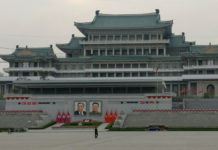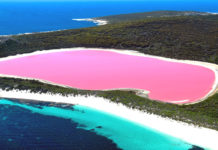Four new elements, with atomic numbers 113, 115, 117, and 118, were placed on the periodic table with temporary names of ununtrium, ununpentium, ununseptium, and ununoctium until the International Union of Pure and Applied Chemistry (IUPAC) revealed their official names. Three of the elements were named after city’s of scientists’ institutions: Tennessinen from Tennessee, Nihonium from Japan and Moscovium from Moscow; while the fourth element, Oganesson is named after Yuri Oganessian, a nuclear physics professor at the Joint Institute for Nuclear Research. These four elements have been synthetically created in labs.
 Element with atomic number 113, discovered at RIKEN Nishina Center for Accelerator-Based Science at Japan, scientists proposed the name nihonium (Nh) which is derived from the term, Nihon and it is one of the two ways to say “Japan” in Japanese. The name nihonium makes a direct connection to the nation where the element was discovered and it is the first element to have been discovered in an Asia.
Element with atomic number 113, discovered at RIKEN Nishina Center for Accelerator-Based Science at Japan, scientists proposed the name nihonium (Nh) which is derived from the term, Nihon and it is one of the two ways to say “Japan” in Japanese. The name nihonium makes a direct connection to the nation where the element was discovered and it is the first element to have been discovered in an Asia.
 The name proposed for the element with atomic number 115 is moscovium (Mc), in recognition of Moscow, honouring the city where the discovery studies were carried out using Dubna Gas-Filled Recoil Separator.
The name proposed for the element with atomic number 115 is moscovium (Mc), in recognition of Moscow, honouring the city where the discovery studies were carried out using Dubna Gas-Filled Recoil Separator.
 Similarly, the element with atomic number 117, is named tennessine (Ts) and just like moscovium, it is according to the rules of honouring a place or geographical region. Tennessine recognises the contribution of Oak Ridge National Laboratory, Vanderbilt University, and the University of Tennessee in the studies of super-heavy element research &element synthesis at ORNL’s High Flux Isotope Reactor (HFIR) and Radiochemical Engineering Development Center (REDC).
Similarly, the element with atomic number 117, is named tennessine (Ts) and just like moscovium, it is according to the rules of honouring a place or geographical region. Tennessine recognises the contribution of Oak Ridge National Laboratory, Vanderbilt University, and the University of Tennessee in the studies of super-heavy element research &element synthesis at ORNL’s High Flux Isotope Reactor (HFIR) and Radiochemical Engineering Development Center (REDC).
 The rules followed while naming the element with atomic number 118, is honouring the name of scientist. The element is named Oganesson, after Professor Yuri Oganessian recognising his work and contribution in transactinoid elements research, discovery of super-heavy elements and his research providing significant advances in the field of nuclear physics by providing experimental evidence for the “island of stability”.
The rules followed while naming the element with atomic number 118, is honouring the name of scientist. The element is named Oganesson, after Professor Yuri Oganessian recognising his work and contribution in transactinoid elements research, discovery of super-heavy elements and his research providing significant advances in the field of nuclear physics by providing experimental evidence for the “island of stability”.
By: Archa Dave



























